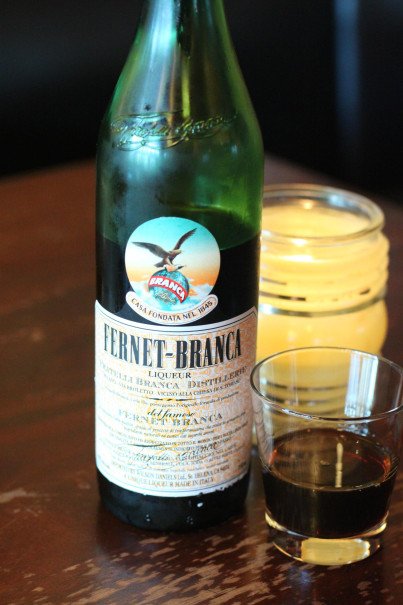
The Eighth Fernet

The Eighth Fernet
When I arrived in Buenos Aires in October 2007, I was 22, knew no one in the city, had only the vaguest sketch of a plan, but came armed with a great ambition: I would not simply enjoy a cozy expat’s existence of itinerant friends, backpacking, and yanqui-friendly bars; I would do nothing less than become Argentine. I would grow long hair and a scraggly beard. I would speak in an exaggerated rioplatense accent and pepper my speech with porteño slang. I would root for a lesser Argentine soccer club, not one any tourist was likely to have heard of. I would live and sleep and dream as an Argentine. The most forbidding step toward achieving argentinidad soon became clear: I would need to learn to love the unquestioned drink of the country, an herbaceous Milanese liqueur known as Fernet Branca.
Within a week of my arrival, an Englishman told me exactly how I could accomplish this labor: No one could stomach Fernet the first time, he told me, but if you kept forcing it down, after seven drinks you would develop a taste for the stuff. Upon drinking your eighth, you would fall in love with it.
Some people say Fernet tastes like cough syrup. But after my first sip, I learned this was false. Fernet, in fact, looks quite a bit like cough syrup—dark brown, slightly viscous, opaque—but cough syrup has a sweet aftertaste and a pleasant numbing effect. Fernet has neither. Argentines invariably drink Fernet with Coca-Cola—un Fernet means a glass with one part Fernet to three parts Coke—but even mixed with soda, its nature cannot be masked. It is bitter, pungent, and alive—certainly chemical and likely toxic. It’s what I imagine paint thinner would taste like if it had been left for decades in a rusty pail in a particularly bacterial basement.
But a determined mind can acquire any taste, and so after a few months, I found myself one Thursday evening standing at the bar of the jazz club Thelonious ordering my eighth Fernet. Each time I’d braved Fernet, the toxicity level had decreased and the concoction’s merits had become clearer. The drink never stopped being harsh, but every mouthful seemed to reveal new depths—not just the known notes of saffron and myrrh and cardamom and grape, but abyssal hints of uncommon, perhaps undocumented tastes. (The recipe has been, since its creation in 1848, a closely held Branca family secret. Among its rumored ingredients are wormwood, St. John’s wort, codeine, and fermented beets.)
On the eighth Fernet, this unmappable complexity suddenly expressed itself as an unalloyed virtue. Fernet, with its moody secrets, tasted like Buenos Aires felt—a cerebral, brooding city where most everyone seemed well versed in Freud and Foucault, deeply fatalistic, and often unemployed. On stage at Thelonious, the drummer Pipi Piazzolla, grandson of Argentina’s most famous composer, was caressing his snare, calling forth a tempest that mixed tango, chacarera, and jazz. Outside the second-story window, I watched a knotty old branch sway in and out of the amber glow of a street light, sending long shadows flitting across the ceiling. Let those Brazilians to the north douse themselves in sugary cachaça, I thought. In Argentina, this was life. I finished the remains of my eighth Fernet and, satisfied, called out for a ninth.